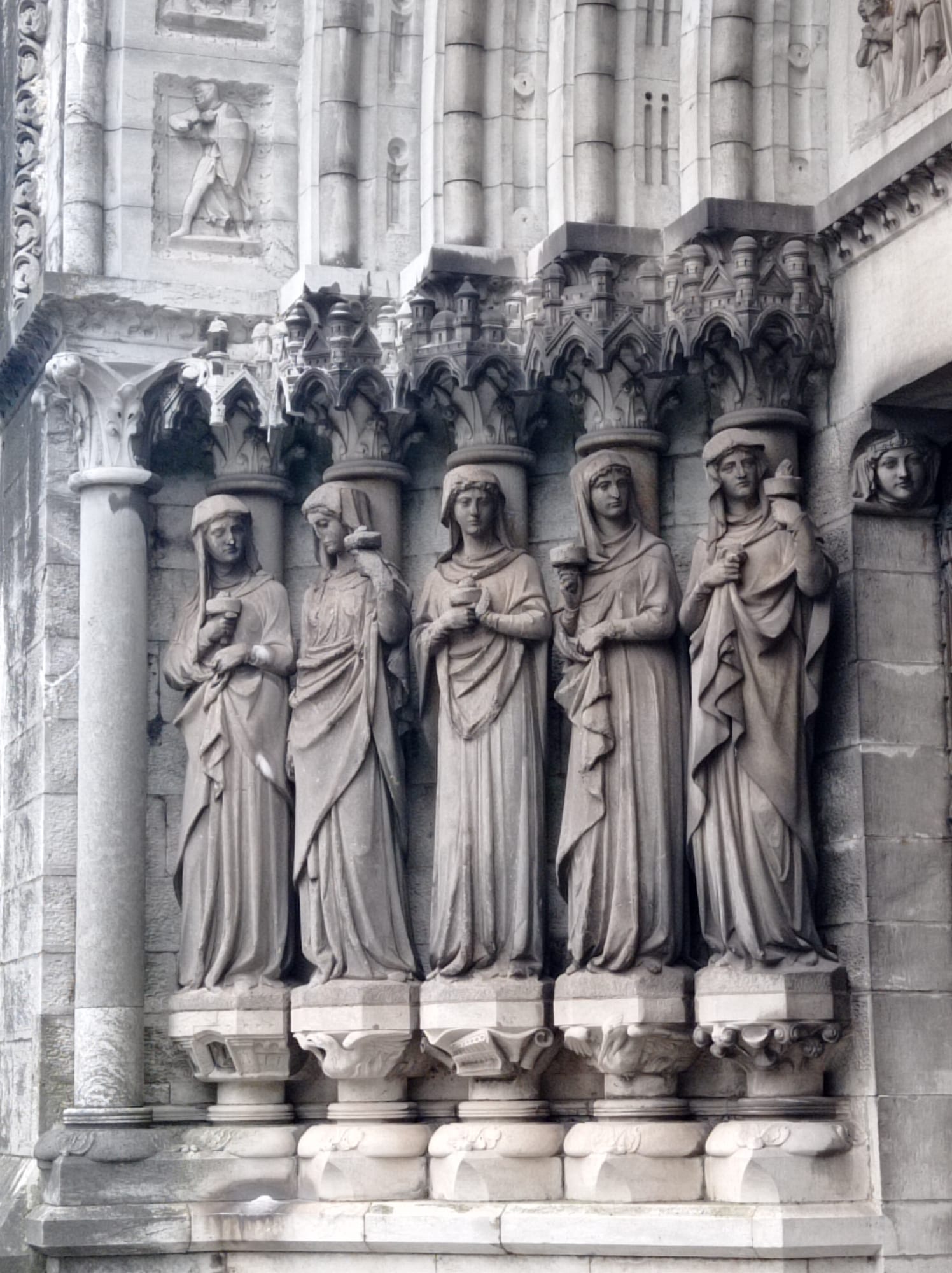Welcome to Saint Fin Barre’s Cathedral – Fota Felicia Ștefania

Can you picture a place where the pagan beasts meet Catholicism? Well, this cathedral is exactly where the two worlds meet. Built on the site of a seventh-century monastery, this cathedral is named after the patron saint of Cork. The stately building is a must-see in this city, and our visit surely didn’t leave us disappointed.
While the place of worship follows the traditional shape and elements of any catholic church, the details make it unique. Medieval beasts, such as the wind dragons can be found both inside the cathedral and outside, used as gargoyles. The reason for their appearance is the designer of the building, William Burges who was inspired by French Gothic architecture. We have been told by the tour guide that the same symbol is given on a local badge for the people who donate blood. Another story told by the statues on the outside walls is the parable of the Wise and Foolish Virgins. On the left, there are five statues of wise maidens which appear happy, and underneath them are symbols of good treats. For example, there is the pelican: the bird will feed its chicks with its own blood when there is no sight of food, so it is known as a symbol of sacrifice and martyr. On the other side, there are the foolish maidens who appear upset and are accompanied by negative symbols.

In conclusion, Saint Fin Barre’s Cathedral is a great place both for prayer and looking at the details of the architecture. When you go there make sure to look for the head of Moses which is portrayed with horns, because of a common Hebraic mistranslation.
Why two Irelands? Short story of a long history – Fota Felicia Ștefania
Have you ever wondered why there are both the Republic of Ireland and the area of Northern Ireland? In most cases when you hear ”Northern” followed by a country you think of the upper region of it, but in this case, they are in two different countries, the latter being part of the United Kingdom.

The reason for this isn’t hard to guess: religion and politics. It is important to keep in mind that the roots of the conflict were built hundreds of years ago, in the 17th century during the reign of James I. Because he was protestant while his country was predominantly catholic, he preferred the inhabitants of his own religion and gave away the land in the north to protestants. This changed the distribution of religions in Ireland in time and proved to be a bad idea given the bloody conflicts which arose because of these religious differences. In the 19th century, Irish people wished for home rule: governing their own land while remaining part of the United Kingdom. In 1912 a document called the Ulster’s Covenant was released and it made clear that any autonomy given to Ireland would end in civil war. Four years later the Easter Rising took place but it was brutally shut down by the British, which only caused more conflict. Following the War of Independence and other violent conflicts, the United Kingdom accepted the independence of Ireland under two conditions: they kept Northern Ireland and retained the British Monarchy.
At the moment, the two regions are at peace and have an open border. Do you think Ireland will ever be united again?